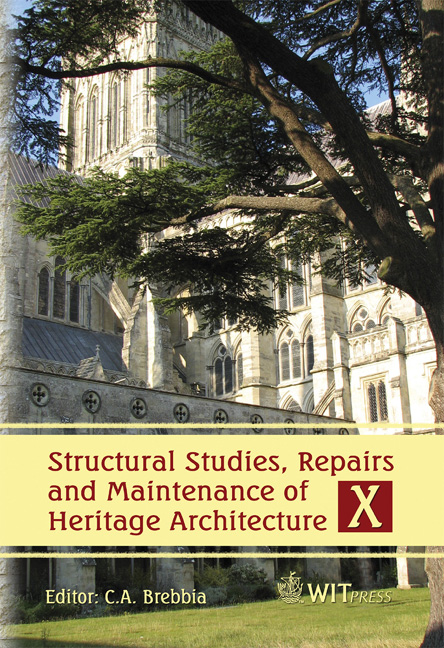Evaluation Of The Structural Behaviour Of Historic Masonry Buildings By Using A Sonic Pulse Velocity Method
Price
Free (open access)
Transaction
Volume
95
Pages
10
Published
2007
Size
1,951 kb
Paper DOI
10.2495/STR070211
Copyright
WIT Press
Author(s)
F. Casarin, M. R. Valluzzi, F. da Porto & C. Modena
Abstract
Sonic pulse velocity tests are mainly used in historic masonry structures for consistent diagnosis evaluations and checking of the effectiveness of strengthening interventions. In this paper, results obtained from sonic tests applied on two historical constructions, namely the cathedral of Reggio Emilia and the bell-tower of the S. Zeno basilica in Verona, Italy are presented, to allow structural models being calibrated on an experimental basis for the definition of the behaviour of the buildings. The sonic investigation method is preliminarily discussed in the light of the outcomes of an EU research comprehensive project, also aimed at the identification of capability and limits in applications in the historical heritage field. Keywords: non-destructive techniques, experimental investigation, historical masonry structures, FE modelling, sonic pulse velocity test. 1 Introduction The sonic pulse velocity method is a rather established technique for the in-situ diagnosis and for the evaluation of the effectiveness of the interventions applied to historical masonry buildings (Rilem [1]). It is a fully non-destructive technique, thus it does not present any risk of damage for the building. Sonic waves are used for preliminary investigations in masonry to identify internal cohesion among materials, in order to derive the presence of voids or damage, thus obtaining important indications for the possible most suitable consolidation intervention (e.g., injectability checking of the wall, etc.).
Keywords
non destructive techniques, experimental investigation, historical masonry structures, FE modelling, sonic pulse velocity test.




